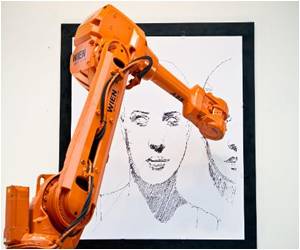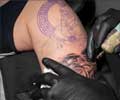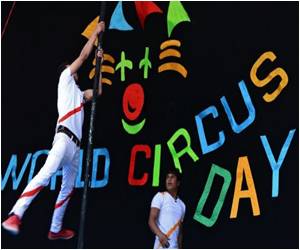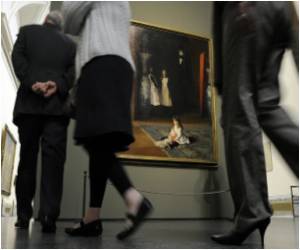An artist has transformed Spanish dictator Franco's head into a punching ball.

Indeed, the National Francisco Franco Foundation, which sued unsuccessfully over Merino's earlier Franco-in-a-fridge sculpture, is taking him back to a court in Madrid in outrage over his latest work, "Punching Franco".
The punching ball is a silicone representation of Franco's head, complete with dark sunglasses missing a lens. The head sits on top of a tall stand with a heavy base and a spring.
"Punching Franco" is now owned by a photographer but has returned to the artist's studio for repairs after its new owner's parrot nibbled away at the general's ears and nose.
"For people who were repressed or never won justice, it is a way to unburden themselves, a kind of catharsis," Merino told AFP.
But the Franco Foundation, created in 1976, a year after Franco's death, to defend his legacy, does not see it in the same way.
Advertisement
"It is in bad taste because that could be his father or mine, placed in such a way as to say: 'Break his nose, punch his head'," complained the foundation's deputy president, Jaime Alonso.
Advertisement
The artist's lawyers say he is being harassed by the Franco Foundation's lawsuits.
The Madrid court rejected in July an earlier Franco Foundation lawsuit against Merino's "Always Franco", a sculpture of Franco in green uniform and dark sunglasses with his knees bent inside a Coca-Cola-style fridge with a glass door.
In that case, the judge said "Always Franco", which was the star attraction at a Madrid art fair in February 2012, did not injure Franco's reputation and was the product of Merino's constitutionally protected right to artistic expression.
This time, Merino's lawyers say, the Franco Foundation is acting in bad faith, repeating the same arguments that have already been rejected by the court.
In any case, like Merino's earlier work, "Punching Franco" makes no reference to the foundation and cannot therefore injure its reputation, they say.
The punching ball was put on public show this summer in a "Days Against Franco" exhibition organised by the Anti-Fascist Artists' Collective, which laments that Spain is unable to view with perspective the consequences of Franco's 40-year dictatorship.
Among the exhibiting artists was Fernando Sanchez Castillo, who in 2011 bought Franco's former yacht, the Azor, and chopped it into pieces as a raw material for sculptures.
Merino said the Franco period remained something of a taboo in Spain, which in 1977 passed an amnesty for political crimes committed in the 1936-39 Civil War and ensuing dictatorship.
The artist noted, for example, that Spanish human rights judge Baltasar Garzon had found himself facing charges of abuse of power for trying to investigate the disappearance of some 114,000 people during Franco period.
Though finally acquitted on that charge, Garzon was disbarred for ordering wiretaps in a separate corruption case.
More recently, Merino recalled, two Spanish ex-policemen refused to be extradited to Argentina to face accusations of torture under the Franco regime.
"For me, an artist has to be close to what is happening," said Merino, as he showed off a yet-to-be-completed sculpture of late North Korean supreme leader Kim Jong-Il, who died December 17, 2011 and was succeeded by his son Kim Jong-Un.
The sculpture of Kim Jong-Il will be displayed in a fridge, too.
Source-AFP









